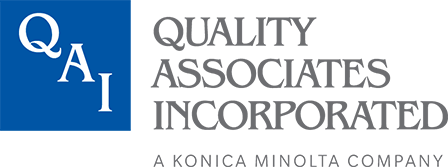Remember when the most significant security concern was making sure the office filing cabinet was locked at night? Those days now seem like ancient history. With remote work becoming the norm rather than the exception, we face a completely different set of challenges in the field of remote work cybersecurity, such as keeping our documents and sensitive information secure.
The reality is that your employees are now accessing company documents from their kitchen tables, coffee shops, and spare bedrooms across the country. While this flexibility has been fantastic for work-life balance and productivity, it’s also opened up a whole new world of security vulnerabilities that would make any IT professional lose sleep.
The New Landscape of Document Security Risks
Let’s talk about what you’re up against. When your team was all working in the same building, you could control the environment. You knew who had access to what, you could see who was printing sensitive documents, and you had a pretty good understanding of information flow. But now? Your confidential files might be sitting on someone’s personal laptop next to their teenager’s homework folder or, worse, accessed over an unsecured public Wi-Fi network at the local Starbucks.
The risks aren’t just theoretical, either. We’ve seen countless examples of data breaches that started with something as simple as an employee accessing company files on an unsecured network. Malicious actors are constantly scanning for these vulnerabilities, looking for ways to intercept data transmissions or gain unauthorized access to corporate systems. And let’s be honest – not every employee is thinking about cybersecurity when they’re just trying to get their work done from their home office.
Building Your Remote Work Cybersecurity Strategy
The good news is that secure document sharing doesn’t have to be complicated or frustrating for your team. The key is implementing solutions that are both robust and user-friendly. When security measures are too cumbersome, people find workarounds – and that’s where the real problems begin.
First and foremost, you need to establish secure network connections for all remote locations where your employees are working. This means going beyond just hoping everyone has decent internet at home. A proper remote access solution should include VPN capabilities that create encrypted tunnels between remote workers and your corporate network. Think of it as building a secure highway that only your authorized personnel can use to transport sensitive information.
But here’s the thing about remote work cybersecurity – it’s not just about the technology. You also need to consider the human element. Your employees need to understand why these security measures matter and how to implement them correctly. I’ve seen too many organizations invest thousands of dollars in sophisticated security systems only to have them undermined by simple human errors.
Practical Steps for Secure Remote Document Management
When it comes to secure document sharing, you want systems that make it easy for authorized users to access what they need while keeping everyone else out. Cloud-based document management systems, equipped with proper encryption and access controls, can be game changers. These platforms enable you to maintain visibility into who is accessing what documents and when even when your team is scattered across different time zones.
The importance of establishing a secure network connection at a remote location cannot be overstated. This goes beyond just having a password-protected Wi-Fi network at home. Remote workers must understand the risks associated with using public networks. They should have clear guidelines about when and how it’s acceptable to access company documents outside of their primary workspace.
Your remote access solution should also include regular security updates and patches to ensure ongoing protection. Cybercriminals are constantly evolving their tactics, and your defenses must evolve accordingly. This means ensuring that all devices used for remote work are kept up-to-date with security updates and that your document management systems are regularly audited for vulnerabilities.
The Role of Employee Training
Here’s something that often gets overlooked in discussions about remote work cybersecurity – your employees are your first line of defense. They need to understand not just what security measures to follow but why these measures exist. When someone understands that their actions could potentially expose sensitive client information or proprietary company data, they’re much more likely to take security protocols seriously.
Training should cover practical scenarios that remote workers actually face. What should they do if they need to access documents while traveling? How should they handle secure document sharing when collaborating with external partners? What are the warning signs of a potential security breach? These aren’t abstract concepts – they’re real situations that your team encounters regularly.
Making Remote Work Cybersecurity Seamless
The most effective security measures are the ones that don’t feel like obstacles. When you implement a secure network connection at a remote location or deploy a comprehensive remote access solution, the goal should be making these tools feel natural to use. If accessing secure documents remotely is more difficult than accessing them insecurely, you’re setting yourself up for problems.
Modern document management solutions can provide detailed audit trails, automatic encryption, and granular access controls without creating friction for legitimate users. The technology exists to make secure document sharing as simple as sending an email – the challenge is implementing these systems thoughtfully and training your team to use them effectively.
The shift to remote work isn’t going away, and neither are the security challenges that come with it. But with the right combination of technology, policies, and training, you can create an environment where your team can work productively from anywhere while keeping your valuable information safe from prying eyes.
[Created by a human with the assistance of ClaudeAI.]


